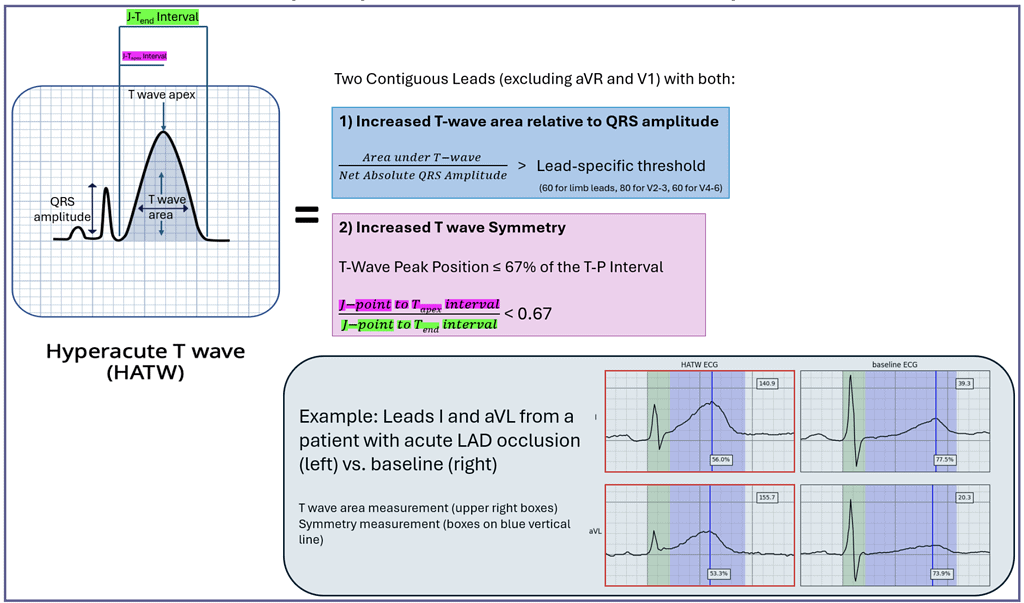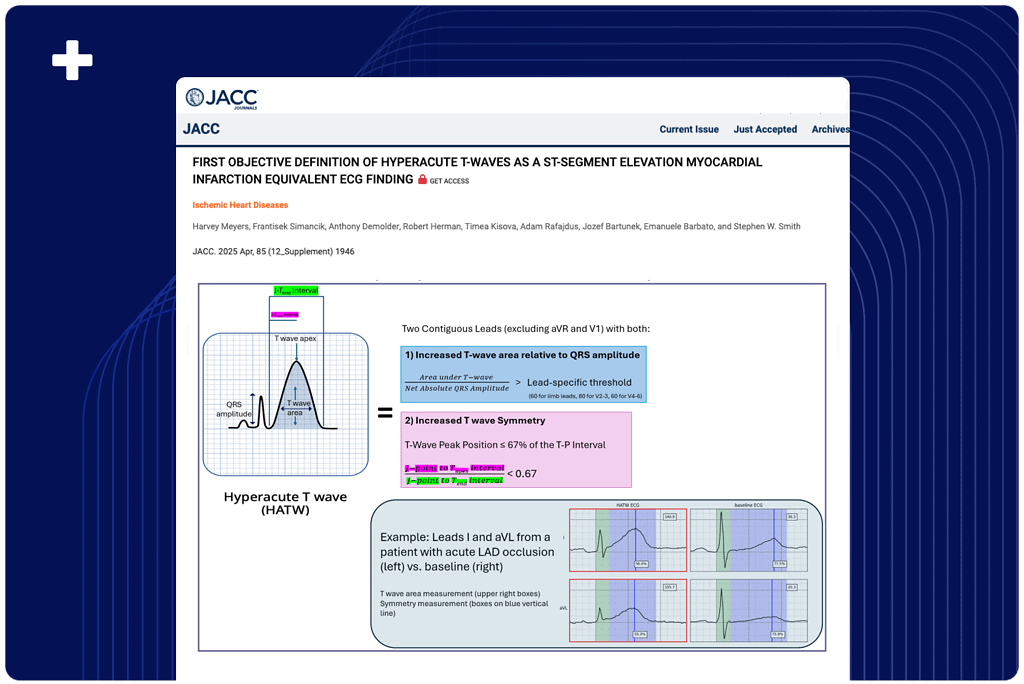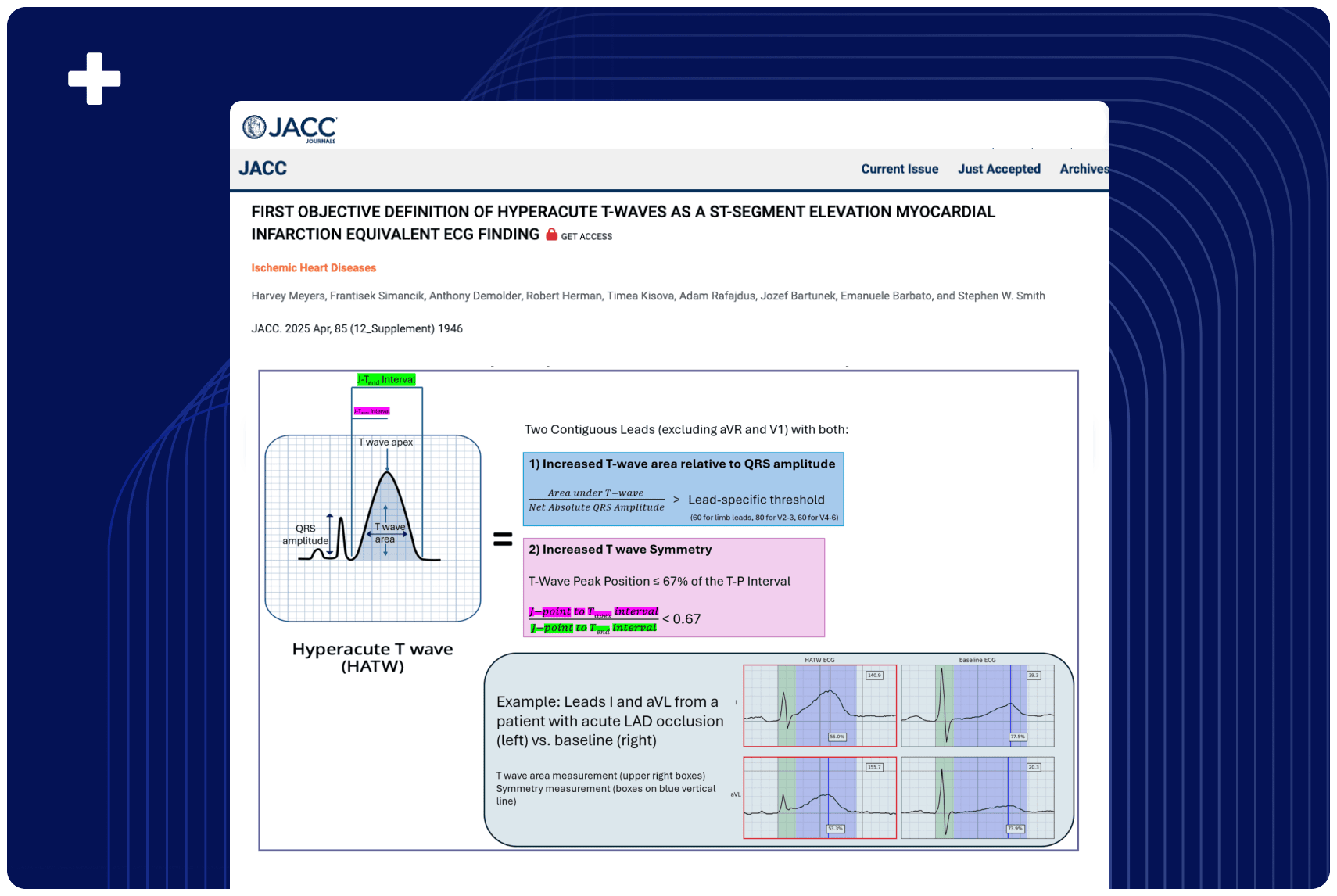Overview
This abstract introduces the first objective definition of hyperacute T-waves (HATW) — an early and often missed ECG sign of a severe heart attack. By accurately detecting blocked arteries even before classic signs appear, the new formula helps doctors identify high-risk patients sooner and deliver life-saving treatment faster.
Published In: Journal of the American College of Cardiology (JACC) – presented at the annual ACC’25 conference
Published Date: April 1, 2025
Background
The American College of Cardiology recommends identifying hyperacute T waves (HATW) as a STEMI equivalent indicating the need for immediate invasive reperfusion strategy. Although HATW have been qualitatively described, they have no objective or quantifiable definition.
Methods
We developed a HATW rule to detect acute coronary occlusion in the absence of STEMI criteria by exploring a database of 12-lead ECGs of acute coronary syndrome patients with known angiographic outcomes. The rule applies to narrow QRS complex rhythms and requires 2 contiguous leads with both: 1) increased ratio of T-wave area to QRS amplitude (using lead-specific ratio thresholds), and 2) increased T-wave symmetry defined as T-wave peak at ≤ 67% of the J-T interval.
Results
1,333 ECGs from 605 patients (130 ECGs meeting formal STEMI criteria) were evaluated. The HATW formula demonstrated 37% sensitivity 98% specificity for acute coronary occlusion myocardial infarction among all patients, and 23% sensitivity and 98% specificity in patients without formal STEMI criteria.
Conclusion
This is the first quantitative analysis of HATW demonstrating its potential as a highly specific STEMI equivalent ECG finding of acute coronary occlusion. Further prospective validation of its performance is warranted.

Authors: Harvey Meyers, Frantisek Simancik, Anthony Demolder, Robert Herman, Timea Kisova, Adam Rafajdus, Jozef Bartunek, Emanuele Barbato, Stephen W. Smith







